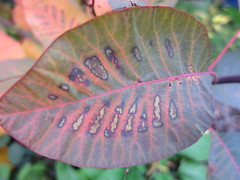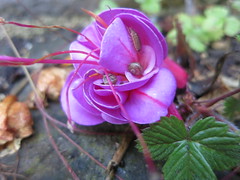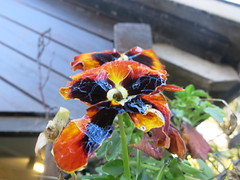
Practical, robust, chunky and functional, in a sort of old-worldy way, it was almost the anti-Alessi. The sort of kettle your mum would tut at the price of but secretly approve of.
I hated it. I used it, but I hated it. The thick metal was slow to heat, the whistle was carefully set to be pleasant rather than piercing, and it was heavy, heavy with its bottom weighted water and that high handle that always meant I was overstretching my arm.
The day I came home from the shops to find it glowing red, the whistle melted, and the inside bone dry, and hoiked it off the hob and dropped it from a badly-burned hand onto the floor, chipping the overheated enamel, was the day I realised stove-top kettles were over, for me; and indeed though the kettle was still usable (being shockingly robust) and used by my housemates (who preferred it) I brought in a cheap plastic kettle that turned itself off to save us all from my absent-mindedness.
The kettle, as high-quality consumer goods tend to, continued to pursue us, after its original purchaser had emigrated, through the tiny shed-like starter home, after we'd moved into a property and it was then, when I first had to take a drill to my walls that I realised that with a little careful clamping, one might be able to drill drainage holes in a fancy le Creuset kettle.
It's not the best planter - the narrow top gets no rain, so the plants tend to be thin and unsubstantial, like steam from a kettle. But that works; and I always have a hanging basket to hang on that bracket which inevitably you find, next to your door, when you move in, waiting for whatever the next residents think should greet you, morning and night, family and visitor, next to the door, when you come home.













